What should you order at a restaurant in China? Better yet, how do you order at a restaurant in China? My aim with this China restaurant guide is to explain the types of Chinese cuisine you’ll find at an authentic restaurant, the culture of eating in China and how to order Chinese food like a local.
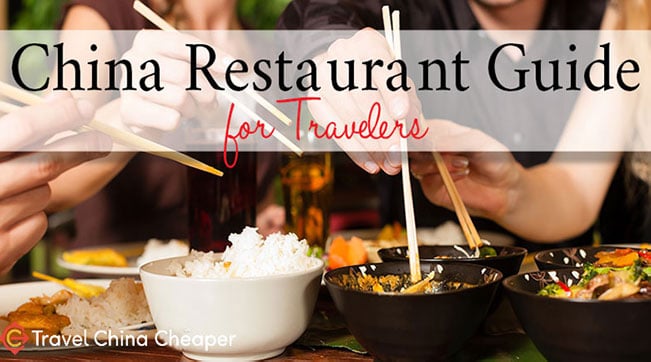
For first time visitors to China, particularly those who do not speak Chinese, visiting a local Chinese retaurant can seem like a huge challenge. It’s no wonder that many people travel to China and spend their time at Starbucks, McDonalds or Subway!
We all appreciate food that we can recognize and know that we’ll enjoy.
Getting comfort food while traveling isn’t a bad thing. But too often I meet travelers to China who skip out on amazing local food not because they don’t want to try it, but because they’re not sure how.
For that reason, I’ve set out to offer you a China food and restaurant guide that I hope will give you confidence to try something you’ve never tried before. Allow me to share with you a bit of the local cuisine I’ve come to love.
In the end, I believe that you’ll walk away not just having eaten a meal, but having experienced Chinese cuisine.
Types of Chinese Cuisine | China Food Guide
If you are like me, you choose which restaurant to visit based on what kind of food you’re craving. Therefore, it can be really tough to settle on a quality restaurant without a basic understanding of the type of food available.
To help you out, I’ve detailed some of the most common Chinese cuisines to look out for while in China. These include:
If you’re interested, I’ve also highlighted some of my favorite Chinese dishes and tips on how to find them.
Sichuan Cuisine
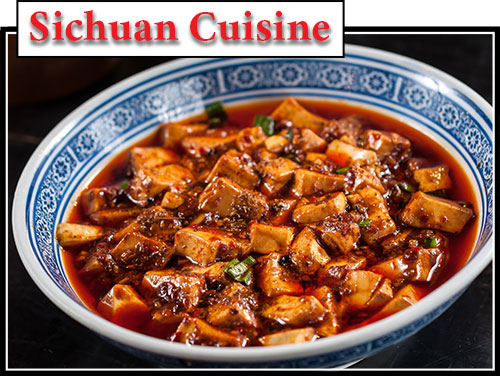
Sichuan cuisine is a type of Chinese food well known for its spicy flavor and stir-fried dishes. It is among the most popular types of cuisine in China and something you do not want to miss if you crave spicy eats.
You can easily spot these types of restaurants from the food, but try to keep an eye out for the characters 四川 as an additional reference for spotting Sichuan restaurants.
Chinese Southern Cuisine
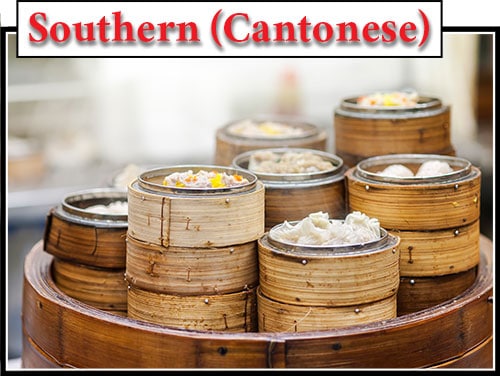
In contrast to the spicy red peppers you find in Sichuan cuisine, food in southern China tends to be sweet and non-spicy.
Great dishes range from generic stir-fry to local favorites like dim sum.
However, unless you are traveling in the south, finding these places can be a little difficult. I would rely on a local guidebook like Lonely Planet to help you find a place with southern cuisine.
Chinese Hotpot
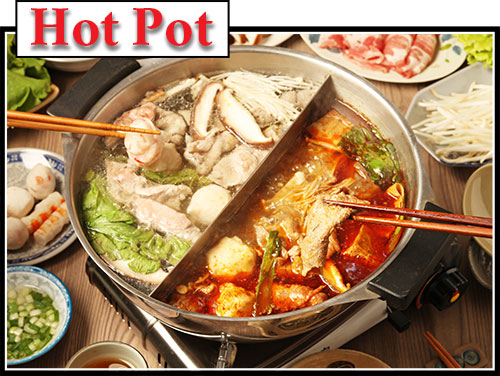
Hotpot varies in style across China but traditionally you have a bowl of broth and boil meat and vegetables for eating.
You can choose from many types of broths including spicy, normal, and others such as chicken, mushroom, and tomato.
Be sure to come with an empty stomach and plenty of people as hotpot is great for group and celebratory meals.
Hui Cuisine
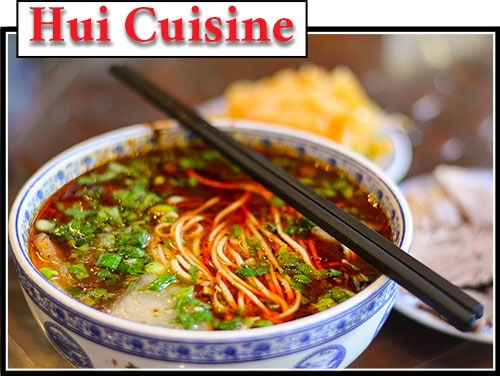
The Hui are a Muslim ethnic group that emerged from Central Asian traders intermarrying with Chinese locals during the Silk Road Trades.
Also known for their cuisine, the most famous food for you to try is a bowl of beef noodles.
To find a place that serves beef noodles, keep an eye out for anything that looks remotely similar to Ramen and restaurants with Arabic script and male staff wearing skullcaps and females staff wearing headscarves.
Xinjiang Cuisine
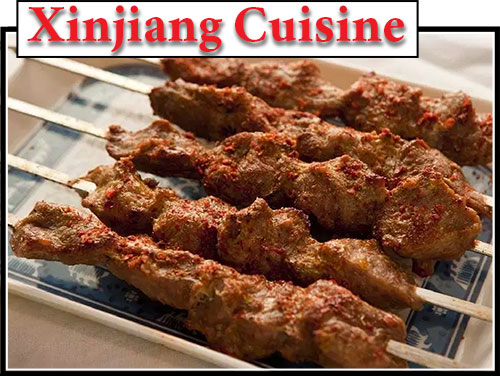
Located in China’s far west, Xinjiang is home to many ethnic groups and their individual cuisines.
While I’m biased by my time living in Xinjiang, this cuisine tops the list of food you should try.
The tastiest Xinjiang treats include langman (thick handmade noodles topped with stir fry), Uyghur lamb kabobs, big chicken dish, Uyghur rice pilaf, and Kazakh milk tea.
Chinese Dumplings
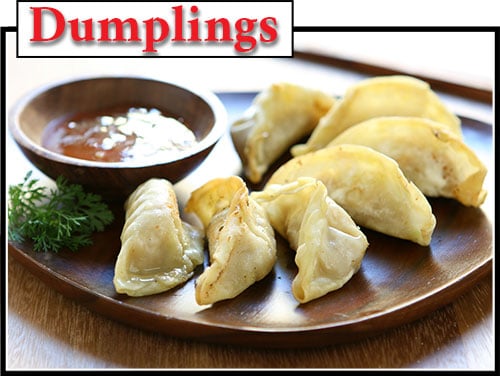
You cannot visit China without having some dumplings. Luckily dumpling restaurants are everywhere and are a super cheap meal. There are meat dumplings, seafood dumplings, vegetable dumplings and more to choose from.
Similar to dumplings, you should also try stuffed steamed buns or baozi. However, scan for cleanliness as many dumpling and baozi restaurants lack proper hygiene.
Other Chinese Cuisines
There are plenty of other cuisines that aren’t listed here – more than I’ve even had a chance to taste. The point here is to show you that Chinese food is not this homogeneous cuisine whose variety fits within a single restaurant menu.
Our “Chinese restaurants” in the US and Europe just don’t do the food justice!
Types of Restaurants in China
Knowing what types of restaurants are around in China can not only help you determine where to eat but is also helpful in controlling your food budget.
Here’s a basic breakdown of the types of restaurants and places to eat you’ll find in China.
Hole-in-the-Wall Chinese Restaurants
Some of the greatest meals you will eat in China can be found in these small restaurants. These also give you the most run for your money if you are looking to eat on a tight budget and are great for quick bites.
After spotting a restaurant offering food to your liking, check and see how crowded it is and use this as possible a gauge for how good the food is.
Try to also monitor for cleanliness as these restaurants are most risky for an upset stomach.
“Sit Down” Restaurant in China
Like in Western countries, sit down restaurants are great options should you be looking for something a bit nicer than your typical fast and easy meal.
Sit down places will also cost you more, but depending on the establishment, your bill will still be far cheaper than what you normally pay at comparable restaurants back at home.
You generally find more variety in cuisine options at sit down restaurants. Some of my favorite sit down places offer hotpot, chuan chuan xiang, Chinese stir-fry, Korean BBQ, and familiar Western dishes from home.
Night Markets in China
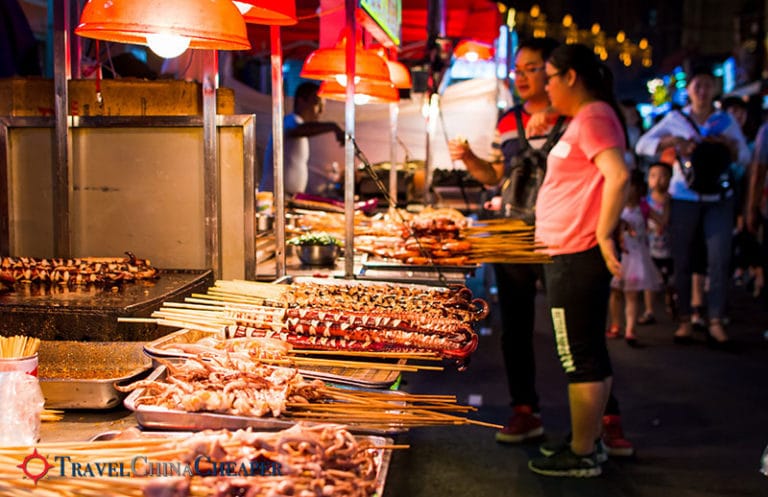
Among the most exciting eating environments you should explore in China are night markets and places offering street food.
Night markets are great to follow-up with after an evening meal as menu items are generally oriented towards small portion dishes and drinks.
Although catering to an exciting atmosphere, it is in these locations where you should exercise most caution for food safety. It is not uncommon for food stalls to use gutter oil at these establishments.
How to Choose a Good Restaurant in China
Choosing a good restaurant in China can be tough if you’re not familiar with the area or perhaps you don’t speak/read the Chinese language.
These tips can help take the hassle out of finding a good restaurant.
- Look for the Busy Restaurants: Like at home, the restaurants with the most business often have quality food. Try to also schedule your meals during the peak hours to make it easier to spot high guest traffic at the best Chinese restaurants.
- Ask a Local Chinese for their Recommendation: Whether it’s the attendant at the hotel or somebody you meet on the street, local Chinese will be happy to point you toward their favorite local restaurant. When they point you toward a restaurant, make sure to ask if they recommend any specific dishes worth trying. This is, by far, my favorite way to find a new restaurant in China, but it often does require you to speak Chinese or use a voice translation app on your phone.
- Check for the Restaurant’s Cleanliness: Unfortunately, it is really easy to get sick from food in China. Some of it may be tied to a sudden change in diet experienced when you arrive, but most of it is likely due to poor sanitary conditions in restaurants. Therefore scan each restaurant you visit for cleanliness. The atmosphere of the restaurant and kitchen, if you can catch a glimpse of it, is the best indicator of whether the restaurant prioritizes sanitation or not. There are also sanitation reports posted in each restaurant, but these are not always reliable as there is always the possibility a restaurant received a high score by bribing the sanitation inspector.
- Request to See the Menu: It is not impolite to ask to see a menu when you walk in to a Chinese restaurant. In larger tourist cities in China, the menu might have English translations or even pictures to go with the offerings. Make sure you’re comfortable with the menu and the prices before you take your seat in a restaurant.
- Last Resort: Refer to Your Local Guidebook: Travel guides like Lonely Planet feature the best restaurants in your area and are super handy when looking for a good place to eat. Keep in mind, they only choose well-established restaurants that are often more expensive since they don’t close as easily. To help you find the right book, I’ve created a helpful list of the best China travel guide books.
Service and Etiquette Tips | Restaurants in China
Before you step foot in any kind of China restaurant – be that a hole-in-the-wall, sit down restaurant or a night market, here are a few things to consider before you order.
Service in Restaurants is…Different 🙂
Unlike in Western countries, waiters at Chinese restaurants only help you when asking for help. You will often hear locals calling out to servers using the words, “fu wu yuan” for regular staff or “lao ban” if speaking to the restaurant owner.
It may seem rude to you at first, but this is customary here in China.
If you are not comfortable speaking Chinese or even yelling at a server in a Chinese restaurant, raising your hand to get the server’s attention also does the trick without being rude.
Food in China is Often Shared, Not Individual
Also unlike in Western countries where you typically order a dish for yourself, Chinese people order a number of dishes to be shared by the whole table.
The only individual item you can expect is a bowl of white rice to complement your ordered dishes.
It’s for this reason that many tables at a Chinese restaurant are round with a lazy susan on top. This makes it easier for a group to share the dishes without reaching all the way across the table.
Yes, Chopsticks are the Norm…Pack Your Fork if Needed
If you are not used to using chopsticks at home, start practicing in preparation for your trip (watch this video to learn the basics)
If the idea of eating with chopsticks for every meal sounds intimidating, pack yourself disposable forks and spoons to last you through your trip.
You can always ask for a fork, but for many restaurants in China, they won’t even have these available for you to use.
There is No “3-Course Meal” Concept in China
While it is common at proper sit-down places to order small cold dishes as an appetizer, Chinese dining does not revolve around our three-course meal concept.
Order as many dishes as you like, but try to finish your whole meal as ordinary Chinese do not take fondly to wasted food.
For dessert, you may need to scout out a nearby bakery as Chinese typically have watermelon or fruit after finishing a large meal at a sit-down restaurant.
Here are some other ideas for great Chinese sweets worth trying – although most are found on the street or at stores, not in a restaurant.
About Your Drink…
Most restaurants in China offer generic hot tea or hot water (Chinese do not commonly drink cold beverages). Others might have a cooler filled with an assortment of beverages like bottled water, soda, and a selection of domestic Chinese beer.
Keep in mind that there are no free refills in China and in most cases when you order a soft drink, it is served in a bottle or a can.
Fast food restaurants like McDonald’s or Burger King have fountain soda, but refills come at an additional charge.
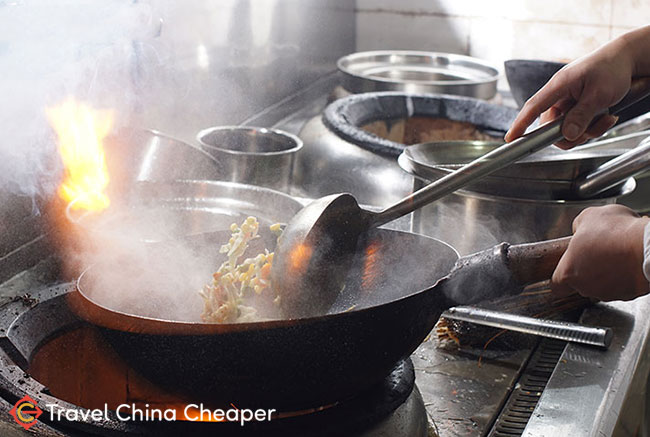
How to Order at a China Restaurant
Here’s where the rubber meets the road!
You know what cuisine you want to try and the types of eateries you can visit. Now you need to sit down and order.
Here are a few tips on ordering, even if you don’t speak/read any Chinese!
- Step 1: Find a Restaurant with Pictures or English on the Menu: The easiest way to order food in China is relying on menus with English or pictures. Simply point and use your fingers to indicate how many you want of each item and you will be in great shape for avoiding any major language barriers while ordering.
- Step 2: If there are no pictures on the menu, take a look at what other people are eating and point to what looks good as a backup way to order. Another trick is to download screenshots of common dishes you want to try in China on your phone and use those as a means to order. It may take somebody language and nod to see if those dishes are offered, but this is far easier than staring at a menu with hundreds of options in Chinese characters.
- Step 3: Lastly, if you want to order in Chinese, it is best to study up on the most common dishes in preparation for your trip. To order any dish or drink, simply say, “wo yao yi ge + dish or beverage.” This translates as “I want one of dish/beverage.” Try practicing this before your trip and check out resources available on my website and on YouTube to improve pronunciation.

Paying the Bill at a Chinese Restaurant
When it comes time to paying the bill at a restaurant in China, don’t get anxious. It’s a simple process whether or not you speak Chinese.
- How to pay the check using Chinese: If you are comfortable speaking survival Chinese, use the terms, “mai dan” and “jie zhang” to ask how much you owe. However, you need a good ear for numbers as waiters typically tell you the check vocally rather than provide you a paper bill.
- How to pay the bill without speaking Chinese: Take out a few Chinese notes and wave over the waiter to enter how much you owe on your phone calculator. It’s definitely the easiest way to pay.
- Tipping?? There is no tipping in China. Whatever the server says you owe at the end of your meal is the total amount you need to pay. Even if you are insistent on providing a tip for good service, it will likely only result in confused looks from your waiter. Read more about tips for tipping in China.
Splitting the Check or Going Dutch?
Chinese view meals with friends as chances to build relationships or “guanxi” and take turns treating each other to meals. If you end up having a meal with a Chinese host, you should at least make plenty of effort to pay for the entire check.
A Note on “Splitting the Check”
Splitting the check is not common in China. Although it is totally fine for foreigners to “go Dutch,” asking a Chinese person to split the check can make the atmosphere awkward and uncomfortable.
If you allow your host to cover your meal, there is the expectation that you will treat them to the next meal. This can be really difficult if you are traveling and likely to move on to the next destination shortly after your meal.
My suggestion if having a meal with a Chinese host is to cover it entirely.
This way you are showing respect for their culture, improving your country’s image abroad, and as a Westerner from a country with higher incomes from China, treating a Chinese person to a meal likely will not set you back financially.
Final Thoughts | Restaurants in China
China is a culture based on its cuisine. Prior to your trip, try to research more on Chinese food as visiting plenty of good restaurants in China should be a central part of your trip.
Make sure you choose your restaurant based on the food type you want and your level of Chinese and then be adventurous! Try something you’ve never tried before and share it with the table.
The more you experiment with food in China, the more you’ll walk away with a better appreciation for the cultural and culinary diversity this country has to offer!









Hi John. In my experience, outside of big tourist cities like Beijing, most restaurants don’t offer their menus in English and the wait staff can’t speak English. I’d say that probably covers more than 95% of the restaurants in China, if not more.